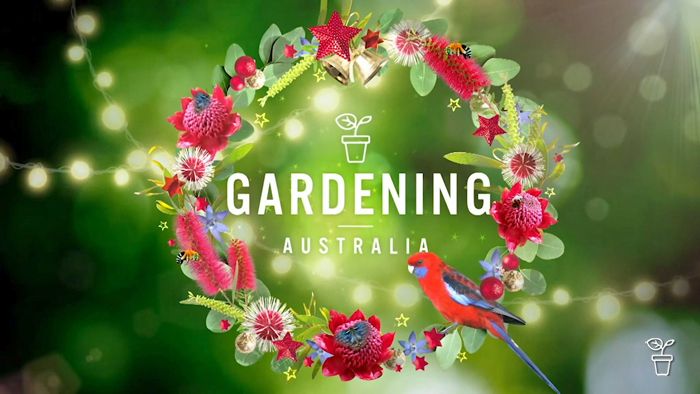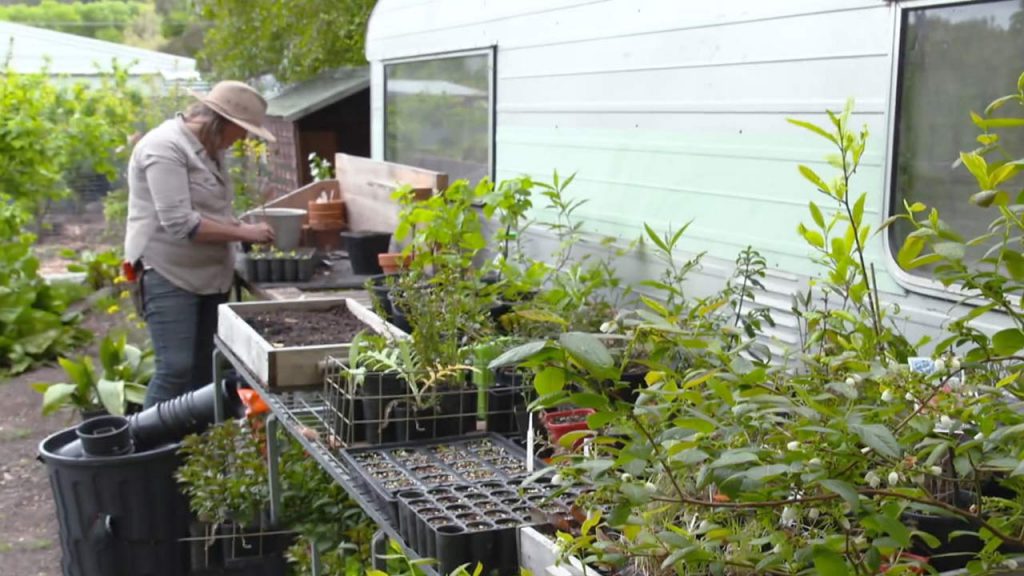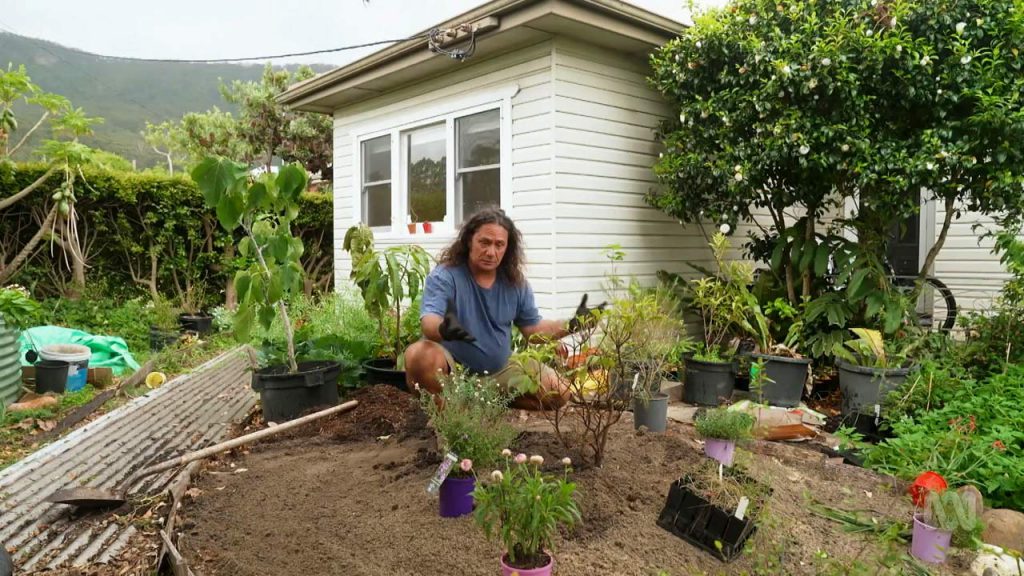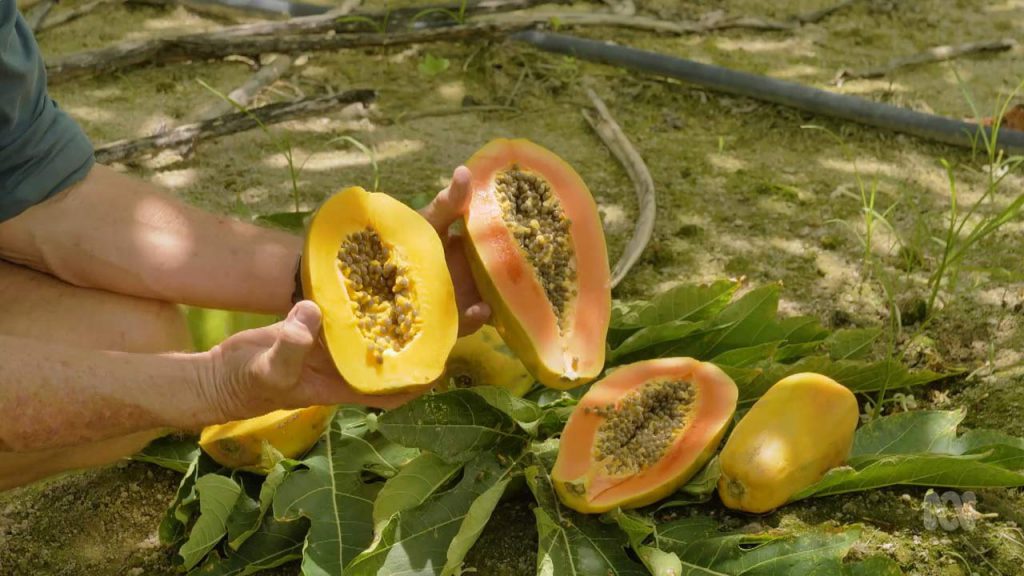Gardening Australia episode 17 2022: Costa Georgiadis visits a vertical garden; Jerry Coleby-Williams meets some guerrilla gardeners; Jane Edmanson tours a courtyard of curiosities; Sophie Thomson prunes for higher canopies; Tammy Huynh creates tiny greenhouses.
Inspiring, entertaining and full of practical advice, join Costa Georgiadis and the team as they unearth gardening ideas, meet avid gardeners and look at some of the most inspiring gardens from across the country.
Gardening Australia episode 17 2022
Wonderwall
Costa visits the home garden of a green wall expert to learn about the benefits of vertical growing to increase the number and diversity of plants in this tropical garden. The stand-out feature of the garden is an incredible green wall – around 20 metres from end to end and two metres high. The former engineer says each square metre requires about 30 plants – more than 1000 plants for the whole wall. There’s not much sun in this garden, so Eric has chosen shade tolerant plants such as anthuriums, staghorns, gingers and echeverias.
“You’ve got to select what’s really hardy – because that’s the key to your green wall,” he says. He’s placed succulents in a section of the wall which only has four hours of sun per day. Eric also has some “mini” green walls in the garden. He says the smaller walls work well with just a few plant species. Each pot hooks onto mesh and has two holes to drip water down. Eric says Rhipsalis and Peperomia are “good friends” for a green wall.
Eric’s masterpiece can go two weeks between watering. He combines semi-automatic irrigation with some hand watering. He also sprays with a fertiliser high in nitrogen. Eric is truly making the best of a small space, by building up – in a spectacular fashion! He has transported his love for the tropics to his little piece of Sydney.
Guerilla Gardens – Gardening Australia episode 17 2022
Jerry meets up with a guerrilla gardening group taking over empty public spaces to grow food for those that need it, sharing growing skills to increase community resilience. Over the pandemic lockdowns, many of us were alarmed by images of empty supermarket shelves and supply shortages. Rather than running out and hoarding toot-roll, a group of young people saw it as an opportunity to provide for the vulnerable in their community, and rethink how public space was being used.
Al Wicks says they’d “always had the pipe-dream of doing community gardens…over covid me and my friends started getting worried about food security for vulnerable people in the community”.
One of these friends was Ruby Thorburn, who says “there was an overwhelming sense of fear, seeing these empty supermarkets. We wanted to produce food overnight…to avoid red tape and bureaucracy and use direct action”.
Curiosity Courtyard
Jane visits an extraordinary collection of rare and threatened Australian native plants in the rental property of a passionate landscape architect. Outside the home of Landscape Architect & Consulting Arborist Adrian Keene, the thriving native verge is just a hint of what he’s created in his Melbourne home. Behind the fence, his small rental courtyard shows that space is no obstacle to creating a beautiful plant collection.
“There’s roughly 250 pots in here, there’s probably 240 different species. The majority of them are rare and threatened plants and they’re generally all found in Australia.”
Most of Adrian’s prized possessions are Victorian plants not often seen in cultivation. Some of Adrian’s favourites include the Scarlet Bottlebrush with bright pink and yellow stamens, and Prostanthera walteri from alpine areas that has an unusual green flower with purple stripes. There’s also a large collection of native orchids such as the hard to grow Diruis sulphurea and the striking Pterostylis pedunculata.
Gift of the Lift – Gardening Australia episode 17 2022
Sophie demonstrates how to prune young trees to make room under lifted canopies as they grow. Winter is a good time to shape deciduous trees as they are dormant; without leaf you can easily see the trunk and branch structure which helps with decision making.
It is important not to prune young trees too early, “only do so when the canopy of the tree is large enough to provide some shelter to the trunk, otherwise you risk the tree suffering sunburn in summer”. The tree also requires all growth when young for photosynthesis, to ensure strong development. Each tree requires an individual assessment, but you can start formative pruning after 1-3 years in the ground.
DIY Greenhouses
Tammy shows a cost-effective way to turn old containers into mini greenhouses for all your propagation and seed-raising needs, perfect to protect plants from the cooler weather. Greenhouses are so useful for growing warm climate plants as temperature, exposure, and light can all be controlled and when plants transpire the water droplets are released into the air forming a humid microclimate. They should also have sufficient ventilation to allow fresh air to circulate around the plants which helps them grow.
Whilst a lot of gardeners dream of having a walk-in greenhouse, Tammy shows us how to take the basic principles and create three mini versions you can make at home from everyday containers.
Banish Borers
Tino gives some tips on how to banish tree borers. The Hazelnut trees at The Patch are about five years old, and they are covered in flowers so they should produce a good crop this year. Not all is as it seems, however, as lurking just below the surface are destructive little pests – borers.
Borers are usually the larvae of beetles or clearwing moths, that lay their eggs inside or on trees. These larvae feed on the living tissue of wood which weakens the tree overtime to the point where the branches could break, or the tree becomes ringbarked. Borers can attack a range of trees including stone fruit, apples, native and exotic ornamental trees, conifers, and citrus. Borers tend to go for trees that are under a bit of stress, whether from root competition, lack of water or nutrient, or poor pruning practices. Keeping your tree happy and healthy is the first defence against borer attack.




